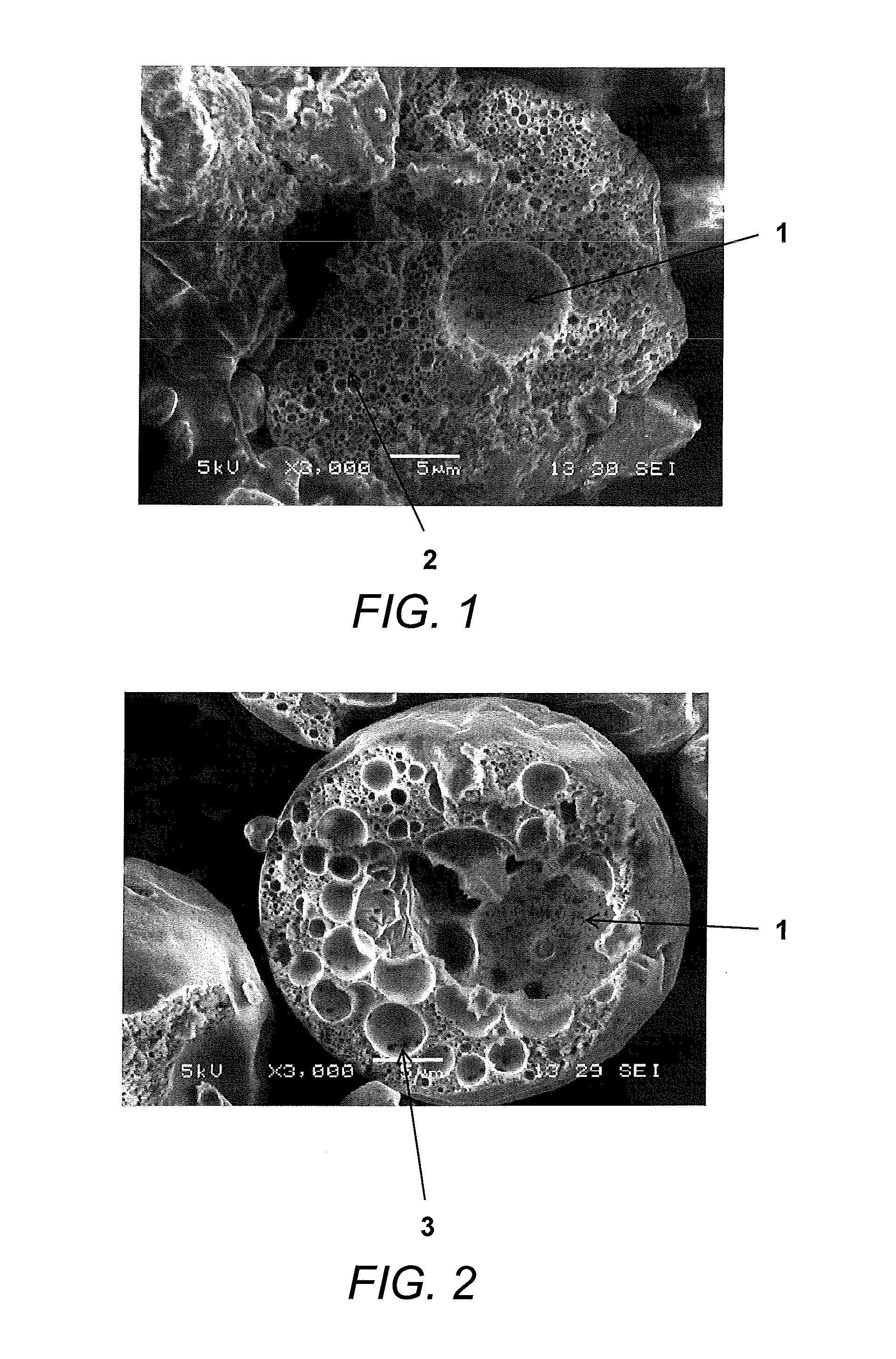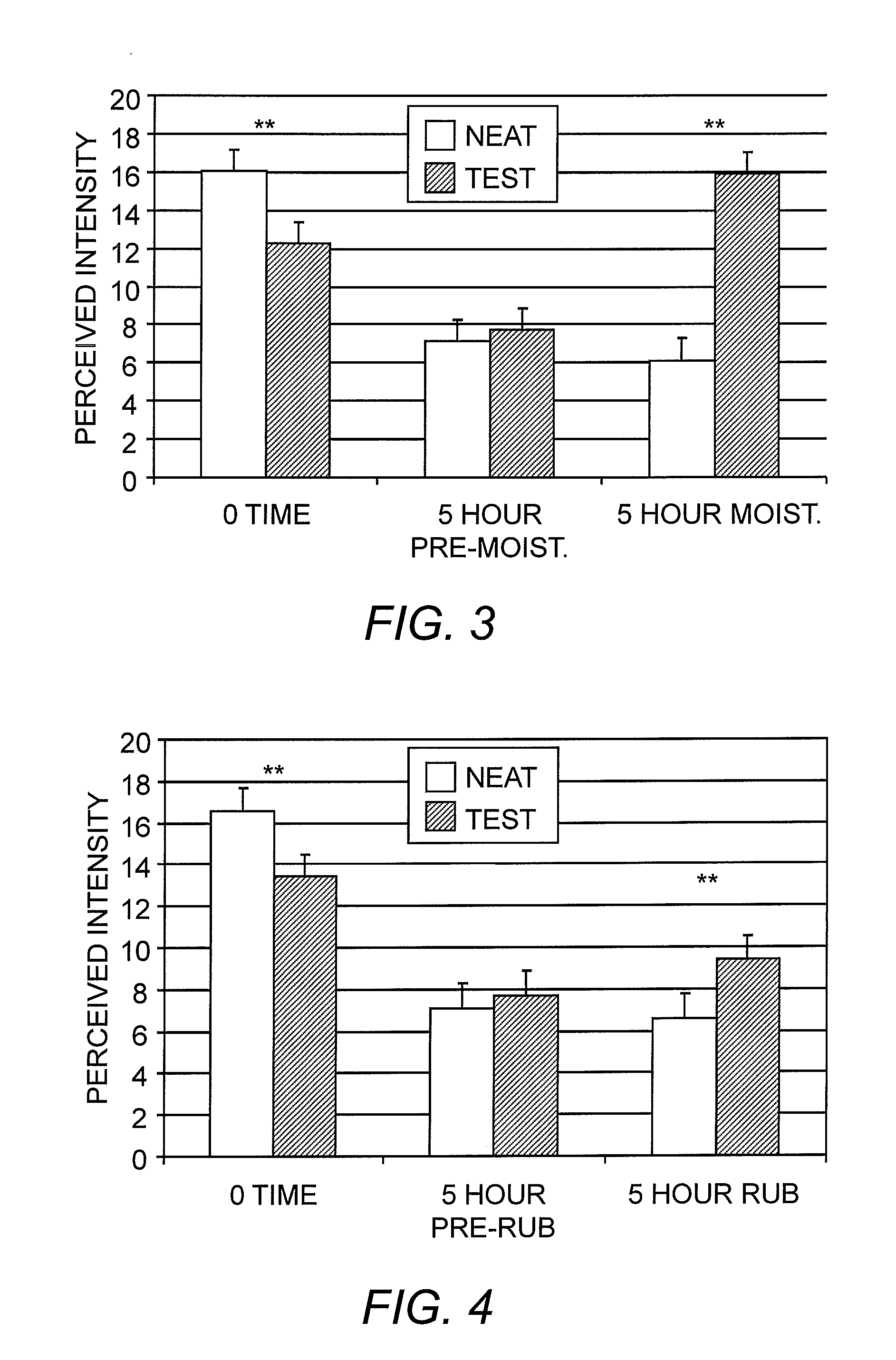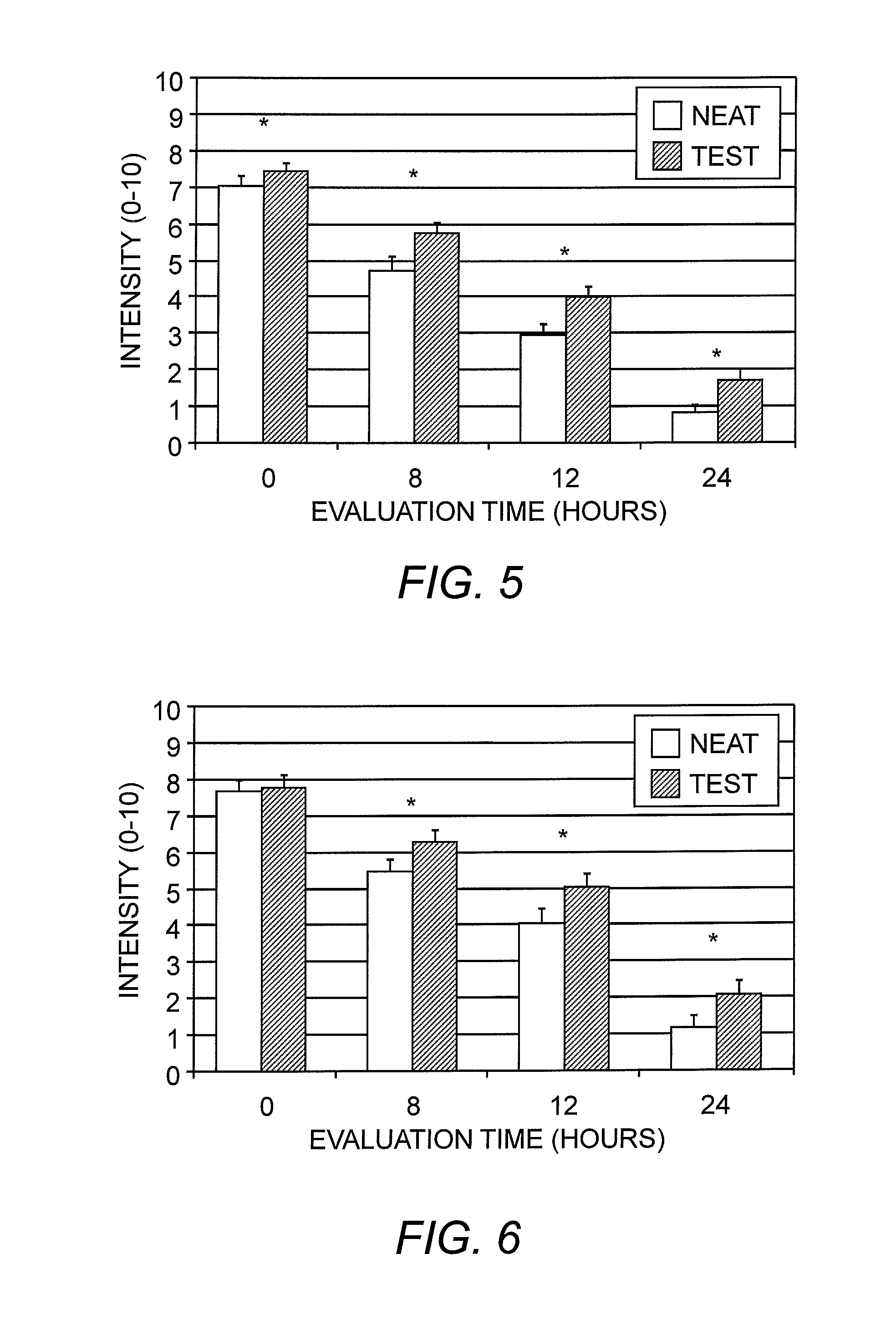Hybrid fragrance encapsulate formulation and method for using the same
a technology of fragrance encapsulate and hybrid formulation, which is applied in the direction of disinfection, chemical/physical process, dentistry, etc., can solve problems such as difficulty in achieving
- Summary
- Abstract
- Description
- Claims
- Application Information
AI Technical Summary
Benefits of technology
Problems solved by technology
Method used
Image
Examples
example 1
Preparation of Core-Shell Silica Capsules with a Sol-Gel Precursor
[0097]This example illustrates the preparation of silica capsules using a precursor where the central silicon atom is coordinated to four alkoxy groups. The empirical formula is Si(OR)4, where —OR is an alkoxy group and is hydrolyzable upon dispersion in water. In general, the method involves preparing a concentrated fragrance emulsification, diluting the fragrance emulsion to the desired concentration, and adding tetraethyl orthosilicate (TEOS).
[0098]Preparation of Concentrated Fragrance Emulsion.
[0099]Two hundred and six grams fragrance oil was weighed out and placed in a round bottom vessel. In a separate vessel, a 1.0% aqueous surfactant solution (120 g) was prepared by dissolving the needed amount of 30% cetyltrimethylammonium chloride (CTAC) surfactant solution in distilled water. The oil phase was then poured into the aqueous phase and the mixture was homogenized with a high shear mixer (Ultra Turrax T 25 Basic...
example 2
Hybrid Spray Fragrance Encapsulation Formulations
[0104]Hybrid silica gel capsule / starch formulations composed of three parts were prepared as follows.
[0105]Preparation of Part A.
[0106]Part A was prepared by weighing out the desired amount of tap water and CAPSUL Starch (National Starch, Bridge water, NJ) into a suitable container. The mixture was then heated to 50 to 55° C. and Maltose (Mitsubishi, Japan) and METHOCEL cellulose ethers (Dow Chemical, Middle Land, Mich.) were added. The mixture was kept at 55° C. and stirred with an overhead mixer until a homogeneous solution was obtained. Part A was cooled to 19° C. by submersion in an ice bath to prevent pre-mature volatilization of fragrance ingredients.
[0107]Preparation of Part B.
[0108]Part B was prepared by weighing out the desired amount of DIMODAN PH320 (distilled monoglyceride; Dow Chemical, Middle Land, Mich.) and heating it until the material was liquefied. The desired amount of fragrance was then added with constant mixing ...
example 3
Physical Characterization of Hybrid Fragrance Encapsulate
[0117]Scanning Electron Microscopy (SEM) was used to characterize the formulation of the present invention. The samples were cut with a doctor blade. A fragrance encapsulate prepared with starch only (FIG. 1) was compared to a fragrance encapsulate prepared according the present invention (FIG. 2). The SEM results clearly show that the fragrance encapsulate of the present invention has large (1-5 μm) holes left by capsules that were embedded into the SD.
PUM
| Property | Measurement | Unit |
|---|---|---|
| temperature | aaaaa | aaaaa |
| mole ratio | aaaaa | aaaaa |
| droplet size | aaaaa | aaaaa |
Abstract
Description
Claims
Application Information
 Login to View More
Login to View More - R&D
- Intellectual Property
- Life Sciences
- Materials
- Tech Scout
- Unparalleled Data Quality
- Higher Quality Content
- 60% Fewer Hallucinations
Browse by: Latest US Patents, China's latest patents, Technical Efficacy Thesaurus, Application Domain, Technology Topic, Popular Technical Reports.
© 2025 PatSnap. All rights reserved.Legal|Privacy policy|Modern Slavery Act Transparency Statement|Sitemap|About US| Contact US: help@patsnap.com



